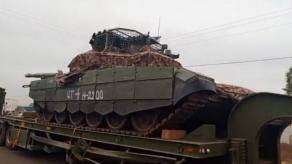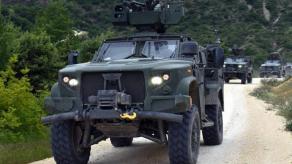Among the wreckage of the russian S-70 Okhotnik unmanned combat aerial vehicle (UCAV), reportedly downed by friendly fire, Ukrainian emergency services discovered fragments of the UMPB D-30 guided glide bomb. This air-launched munition was first recorded during russian long-range strikes on Kharkiv in March 2024.
The presence of the UMPB D-30 at the crash site suggests that russian forces intended to use the S-70 Okhotnik as a standoff bomber, deploying precision-guided glide bombs. Even before the photo evidence of the UMPB D-30 wreckage emerged online, Defense Express had outlined why this role is currently the most suitable for the S-70, given that more advanced tasks, like escorting piloted fighters, remain beyond its capabilities.
Read more: Capabilities of the S-70 Okhotnik Stealth Combat Drones: Will russia Achieve Mass Production?

The selection of the UMPB D-30 over the more commonly used UMPK can be explained by the S-70's design, which incorporates stealth technologies and therefore only has internal weapon bays, with no suspension points under wings. The UMPK, based on a large FAB bomb, would simply not fit within the drone’s internal compartments.
Moreover, the UMPB D-30 offers a greater range. Unlike the UMPK, which is essentially a free-fall bomb equipped with wings and guidance systems, the UMPB was originally designed as a glide bomb. It boasts an impressive range of 90 km, allowing the S-70 to launch strikes from safer distances.

Moscow likely views this drone-bomb combination as an effective solution for aerial strikes against Ukraine. Performing such missions puts at risk just an uncrewed drone, albeit an expensive one. Additionally, operating a drone is more cost-effective than deploying a manned aircraft like the Su-34, due in part to the drone’s single-engine design, which reduces maintenance and refueling costs.
Besides, russia frequently claims that the Okhotnik is a stealth drone, and may try to deploy it closer to the frontline to extend the reach of UMPB D-30 strikes deeper into enemy territory.
However, it’s important to note that russia has not yet started mass-producing the S-70 Okhotnik. Only four prototypes existed, the latest of which was lost just recently. For now, the prospect of squadrons of these drones appearing in Ukrainian skies remains distant.

Rostec, the conglomerate of russian defense manufacturers, reported to russian media that as of summer 2024, preparations for serial production were still underway, with few prototypes undergoing tests. The recent loss of one of the most advanced models due to loss of control and communication failure, leading to its downing by friendly fire, will likely extend the deadlines even further.
Delays are not new for this program: according to 2020 plans, russia was already supposed to have these drones in mass production over a year ago.
Ukrainian experts will study the wreckage, especially its electronic components, which is likely to reveal the presence of critical foreign parts, as was the case with many other russian advanced weapon systems.
This analysis could uncover supply channels that allow such components to reach russia. While it may not be possible to completely cut off contraband supplies, further sanctions could make it significantly more difficult for russia to obtain them.
Read more: The UK Defense Intelligence: with 1,271 Casualties Daily, russian Forces Struggle to Gain Ground while Ukraine Stretches their Defenses














